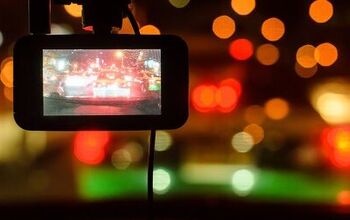Do You Need A Pro To Install A Dash Cam?
If you’re reading this missive, then there’s a solid chance you know exactly what a dash cam does and how it can help your daily commute. Still, it doesn’t hurt to reiterate that having one of these devices installed in your vehicle can mean the difference between a relatively simple insurance claim and one that is dragged out over months in a he-said-she-said battle of legalities. With a dash cam, all the proof one needs is saved right there on a micro-SD card (or to the cloud, if you wish).
And if you’re not the cynical type, a dash cam can help new gearheads learn their way around a track, providing exactly the sort of replay one needs to improve driving skills and pick up tips. Having a pro study one’s laps is a humbling experience but one which can bear tons of great advice if you’re willing to listen and accept the fact that professional instructors probably know more than you about getting around a track.
AutoGuide.com thanks Vantrue for sponsoring this Dash Cam Buyer’s Guide Series
So, you’re getting that type of person to help with driving skill. Good. But does that mean one should also enlist an expert to install the dash cam? As with all good advice columns, the answer is definitely maybe – at least most of the time.
Be honest with yourself about comfort levels with electronics. If you’re the type who needs assistance programming the clock on a kitchen microwave after power outages, this type of install is not for you. But as for the rest of us, even if your expertise only extends to plugging in a smartphone to charge it up, this is a task you can accomplish.
Why? Because setting up most dash cams is literally no different than plugging a device into a regular household socket, except in this case the plug terminates at a vehicle’s 12V power outlet (cigarette lighter, for us old folks). Every forward-facing cam this author has ever installed required precisely one wire, connected at one end to the camera and at the other end to a power source. In fact, the toughest part is often of my own doing, which is to say the hiding of infernal wires which I don’t wish to have cluttering up my dashboard.
Once powered up, make sure your new dash cam has a memory card (likely of the micro-SD type) installed so it can properly capture the footage it is recording. Read any accompanying literature to learn about setting the unit’s date and time, an important feature if you hope to use its video after an incident.
Mounting the cam to a car windshield is generally a simple matter, likely accomplished with a suction cup or sticky mount included in the package. Try to position the camera in the centre of the windshield, but don’t allow it to block the driver’s view forward. Tucking a cam behind the rear view mirror is a popular solution, allowing it to peer forward with a great field of vision but without being a distraction to whoever’s behind the wheel. Some of the best mounts are magnetic, allowing cam owners to grab the device and move it from car to car or take it with them should they wish for some reason.
Installation can get a mite more complicated if a user chooses to power the cam through a car’s diagnostic port. This is a universal connection point on just about every vehicle built in approximately the last 20 years and is generally used by mechanics or technicians to power troubleshooting equipment whilst reading information from the vehicle computer.
Notice the word ‘power’ in that sentence? Since the diagnostic port is a constant source of power, it can be the ideal place in which to plug a dash cam, especially if you have the type of dash cam which can wake itself and start recording when someone bumps into your car while it is parked and unattended. Plugging into the diagnostics port is equally simple as a standard 12V socket but it helps to know what and where to look for: a black rectangular port which is generally located near the driver’s left knee.
Adding cams facing rearward or inside the cabin (think rideshare drivers and the like) do add layers of complexity to this task. After all, three times the cameras mean three times the wiring. The good news is that you’re essentially repeating the same steps over again, which is to say safely route cables from the cam to a power source.
Read the manual and take your time. You got this.
More by AutoGuide.com Staff

































Comments
Join the conversation